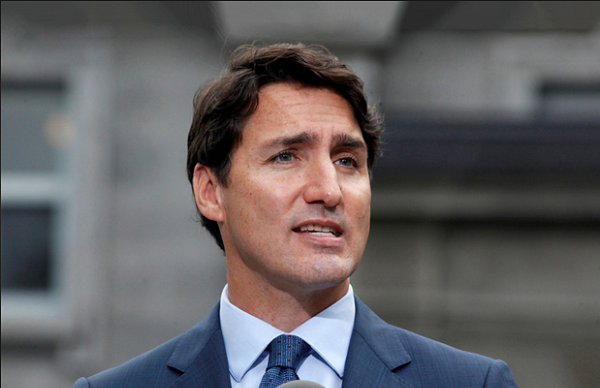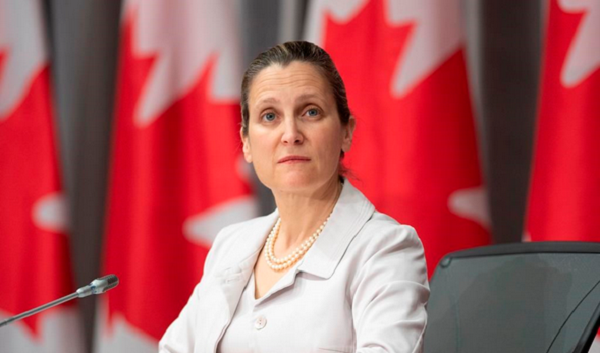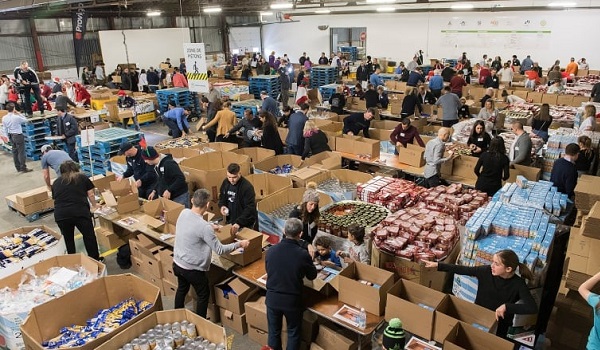Canada-India rift: Concerns grow as clashes between Sikhs and Hindus spill over into suburbs
Young men clutching swords, baseball bats and pieces of lumber are standing guard outside a Sikh gurdwara near Toronto’s Pearson Airport, their eyes scanning the perimeter for signs of trouble in the dark.
Prayers broadcasting from inside the temple mix with Punjabi music blaring from a pick-up truck parked nearby. The mood has been tense ever since the sun set.
“We have to be ready,” said Daljit Singh Sekhon, president of the Sri Guru Singh Sabha Malton gurdwara in Mississauga, Ont., glancing at a bank of security cameras Tuesday.
Anxious scenes like this unfolded this week at temples in Brampton and nearby Mississauga as the growing rift between Canada and India spilled over into Canadian suburbs. Hindus and Sikhs, divided over a decades-long fight to carve out a sovereign nation in a northwest region of India, clashed in the streets, and some threatened a wave of sectarian violence rarely seen in this country.
The conflicts come just weeks after RCMP announced they had evidence of Indian officials’ involvement in homicides, extortion and other violent crimes on Canadian soil, which led to Canada expelling six Indian diplomats, and India expelling six Canadian diplomats in retaliation. Prime Minister Justin Trudeau’s government has repeatedly accused Indian Prime Minister Narendra Modi’s representatives of engaging in covert campaigns to repress and kill Sikh activists living in Canada, including gunning down Hardeep Singh Nijjar in Surrey, B.C., last year.
It all boiled over this week in multiple Canadian communities, where out-of-control demonstrations by nationalist Hindus and Sikhs led to condemnation from politicians and forced municipal leaders to contemplate new bylaws that would ban protests at places of worship. In Surrey, three men were also arrested after violence broke out when hundreds of demonstrators showed up at a Hindu temple.
Sikh and Hindus live side-by-side in Brampton, an Ontario city of about 750,000 where one-quarter of the population is Sikh and one in five residents are Hindu. While tension over the goal to carve out a Sikh homeland in India called Khalistan has been around for a long time, this sort of violence between the two groups in Canada is uncommon.
And it has geopolitical undertones that highlight Canada’s increasingly fraught relationship with India.
“Hindus have had enough,” said Arvind Mishra, a 35-year-old IT consultant in Brampton who came to Canada from India about four years ago. “They’re frustrated. They’re agitated and they’re very, very angry. We feel marginalized.”
Mr. Mishra, who said he was inside Brampton’s Hindu Sabha temple with his wife and nine-month-old daughter last Sunday when the fighting began outside with poles and fists, said Sikh demonstrators crossed a line by protesting at a religious site. He blames Ottawa for allowing pro-Khalistan rhetoric, which many Hindus see as support for terrorism, to go unchecked. With anger over the anti-Indian sentiment in the Khalistan movement building for years, it should be no surprise Hindus are pushing back, he said.
The Sikhs say their fight is not with Hindus, but with Indian government meddling in Canada. The Khalistani protesters claimed the event at the Hindu temple Sunday – where Indian consular staff were helping Indian immigrants apply for government pensions – was part of surveillance efforts to keep tabs on pro-Khalistan Sikhs. About 80 per cent of the 1,000 people inside the building at the time were Sikh, according to temple president Madhusudan Lama.
“This is not a religious battle. This is not a battle between Sikhs and Hindus,” said Inderjeet Singh Gosal, an organizer of Sunday’s demonstration outside the Hindu Sabha temple. “This wasn’t an attempt to attack any place of worship. The reason we were there to protest was strictly against the Indian government officials.”
Later that night, a mob of about 300 pro-India counter-protesters – some masked and armed with bats – converged on the nearby Malton gurdwara, known for its strong ties to the pro-Khalistan movement. The following night, riot police tried to contain a larger crowd of protesters, some draped in Indian flags, who took over the street in front of Hindu Sabha temple and were seen kicking vehicles. Three men were arrested.
Relations between Canada and India have been strained since the killing of Mr. Nijjar, a leader in the pro-Khalistan movement, in June, 2023. Three months later, Mr. Trudeau stood in Parliament and alleged that agents of the India government were involved in the shooting.
Conservative Leader Pierre Poilievre blamed Mr. Trudeau for sowing the divisions that led to the violent clashes in Brampton. Mr. Modi criticized what he called “cowardly attempts to intimidate our diplomats” in the deepening diplomatic row. Liberal MP Chandra Arya, who represents an Ottawa riding, said the protests show just how emboldened the Sikh sovereignty movement has become.
Many Hindus blame Sikh extremists, responsible for the Air India bombing that killed 329 people in 1985, for fuelling unrest back in India. Sikhs activists, meanwhile, have never forgotten a violent crackdown on Sikhs in India in the 1980s, and have recently drawn New Delhi’s ire by holding a referendum among Indian immigrants on Khalistan independence.
This week, that tension erupted in Brampton.
“Anytime you have anything where there’s a threat or intimidation relating to a place of worship, that kind of hits a primal chord,” said Dan Stanton, who was an intelligence officer in the Canadian Security Intelligence Service for 32 years.
Canada needs to be wary of growing radicalization on either side of the Khalistan issue, he said. Indian consular officials have become a “lightning rod from the Sikh community’s perspective,” he added, part of the reason the Peel Regional Police chief asked the Indian consulate to consider holding pension events at non-religious sites.
“Indian representation in Canada has been, of course, allegedly involved in murders and extraditions killings and arsons and that. So it’s quite a tinderbox,” Mr. Stanton said. “And then you just, when you have an incident at outside a religious institution … it’s almost like throwing a match.
Religious leaders on both sides have condemned the violence and say emotions are being inflamed by a handful of people. Among them, they say, is Ron Benarjee, a self-described “hardcore Hindu nationalist” known for inflammatory statements against Muslims. He appeared in a video recorded outside the Hindu temple Sunday night, calling on protesters to storm Sikh temples.
Mr. Benarjee, 57, was denounced by Brampton Mayor Patrick Brown for trying to encourage violence and was charged with promoting hate speech by Peel Regional Police. He could not be reached for comment.
Arrest warrants have also been issued for two other men, a 24-year-old from Kitchener and a 22-year-old, for their roles in the violence.
Meanwhile, Rajinder Parsad, a Hindu priest who was caught on camera telling the crowd “if anyone opposes us, we will kill them,” was suspended from the Hindu Sabha temple, according to Mr. Lama. An off-duty Peel Regional Police officer who participated in the pro-Khalistan protest was also suspended.
Back at the Malton Gurdwara, one of the men standing guard said he never thought he would feel the need to protect his place of worship in Canada.
“I thought we’d left all that behind,” said Prince Kler, a dispatcher at a trucking company. “But apparently not.”
This article was first reported by The Globe and Mail













